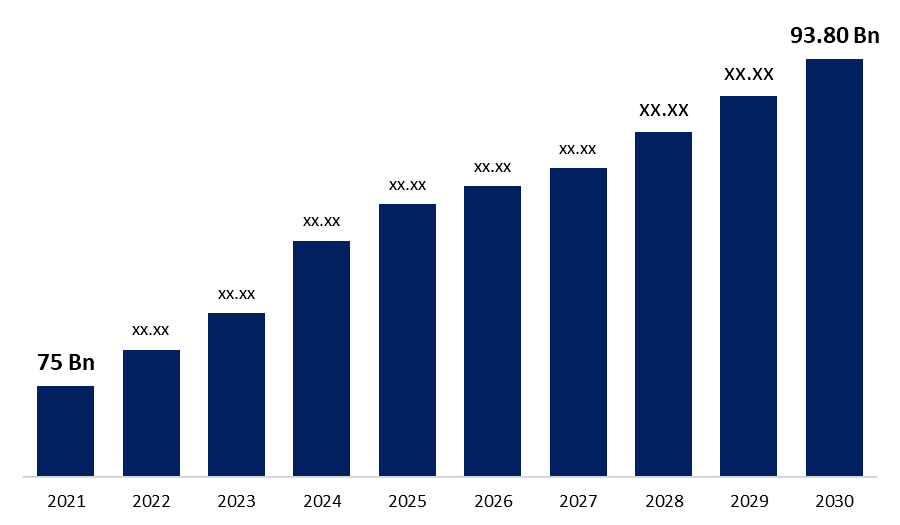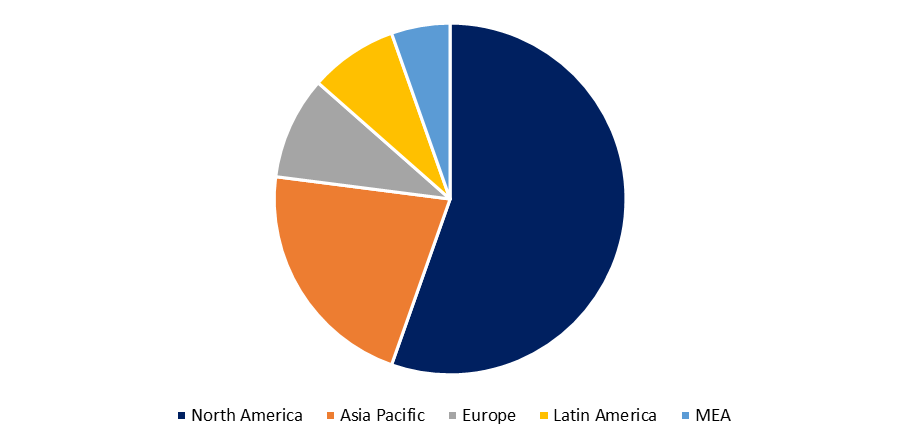Global Railroad Equipment Market Size To Reach USD 93.80 Bn By 2030 | CAGR 17.3%
Category: Automotive & TransportationThe Global Railroad Equipment Market Size Was Valued At USD 75 Billion In 2021, The Market Is Projected To Grow USD 93.80 Billion In 2029, At A CAGR Of 3.06%. As Per The Latest Research Report By Spherical Insights & Consulting.

Get more details on this report -
The companies that are operating in the railway equipment industry are involved in the manufacture of brakes, locomotives, passenger cars, and goods, as well as other parts for the operation of railways. The transportation industry has become the linchpin of economic development in several countries worldwide. The demand for this equipment has increased due to the increasing volume of transported products and the expansion of the distance traveled by logistics vehicles. This particular trend is expected to become more important in the coming years. However, the industry is moderately consolidated and some key players hold the top positions in the market. The market is likely to expand, which brings with it long-term growth opportunities and the expansion of world trade as well as increasing globalization.
Browse key industry insights spread across 196 pages with 79 market data tables and figures & charts from the report “Global Railroad Equipment Market Size, Share & Trends, COVID-19 Impact Analysis Report, By Application (Railway, Subway, And Others), By Equipment (Caterpillar Sideboom, Caterpillar Track Loader, Caterpillar Wheel Loader, Caterpillar Excavator / Track Hoe, Hi-Rail Crane, Locomotive Service Truck (LST), And Others), And By Region (North America, Europe, Asia-Pacific, Latin America, Middle East, And Africa), Analysis And Forecast 2021 – 2030” in detail along with the table of contents
https://www.sphericalinsights.com/reports/railroad-equipment-market
A number of factors have come together so as to increase the importance of rail transportation for the global economy. The same factors offer domestic manufacturers of rail vehicles and equipment with new opportunities to benefit from them. However, there are historical as well as structural barriers while using these opportunities. By combining top-down strategies with bottom-up approaches to consider rail construction as a strategy for economic development, communities and regions could thereby achieve significant synergies. Investing in rail infrastructure cuts costs and pollution, while increasing
transportation efficiency, access to goods, and career opportunities. Assisting local manufacturers to take advantage of the business opportunities that such investments would bring would build on the strong multiplier effect of manufacturing and transferring these benefits to the region in the form of new jobs, more dynamic companies, and a prosperous and diverse local economy.
The global rail network consists of far fewer track miles than a few decades ago, and there is a concern that it will be overloaded and hence would be unable to handle additional volume. The freight volume is hereby expected to double in the next 30 years. The increased use of rail freight transport is seen as a way to absorb larger quantities while minimizing congestion on the motorway system. Concerns about the ability of the rail system to accommodate a significant increase in rail freight volume without compromising the rail speed and reliability have motivated several recent studies on the rail infrastructure. Railway capacity is determined by many factors, including the number of railroad tracks and rolling stock, the number, and performance of locomotives, maintenance, manpower, as well as a variety of operating strategies. The increase in rail productivity in the last quarter of a century shows that more freight which is measured in tonne miles is being transported currently than ever before.

Get more details on this report -
Despite the chronic underinvestment and years of decline, the rail industry still has enormous potential for growth and diversification. The United States continues to be one of the largest national rail markets in the world, consisting primarily of freight. The freight transportation sector is the transportation force that promotes the country's ability to transport goods, and it also owns most of the country's rail network, including that used by passenger rail. For example, freight companies own 97% of the 22,000 miles of tracks used by Amtrak, the only cross-border passenger transportation service in the. To expand passenger transport, these partnerships need to be expanded to add the necessary track capacity. Coordinate schedules, communications, and security requirements; and set rules for shared liability.
The transport infrastructure supports the entire economy, so funding can be adequately provided from multiple sources, including gas tax increases, additional general resources, and other measures. In addition, the United States can maximize the economic benefits of each transportation dollar spent by adopting solid funding, procurement, and manufacturing assistance policies and programs. America has a rail manufacturing supply chain that extends across the country with a growing demand for new passenger and transit rail systems, as well as communities and businesses willing to invest. Courageous measures by the federal government to finance transport can unlock strong potential for economic and production growth.
In recent years, regions in the United States have shown a growing interest in the development of the passenger rail system as a core component of their local transportation systems and infrastructure. This growing interest is due to several factors, including frustration with traffic congestion, increasing demand for a wider range of transportation options, and concerns about climate change. In the late 2000s, these trends were accelerated by the Obama administration's large investments in high-speed trains (HSR) and other next-generation rail and transit projects. Although funding is not yet stable or secure, the fundamental market fundamentals that drive US passenger rail expansion remain. Proponents of an expanded rail investment are a convincing social and economic argument. They find that passenger rail projects help reduce congestion, facilitate the movement of goods and people, and create other economic spin-offs. They note, but often don't emphasize, that the expanded US rail infrastructure also offers enormous opportunities for American manufacturer.
Related Report.
Global Oil Filter Market Size, Share And Global Trend By Fuel Type (Gasoline & Diesel), By Filter Type (Fuel Filter, Engine Oil Filter, Hydraulic Filter & Others), By End Use (Oems & Aftermarket); By Region (U.S., Canada, Mexico, Rest Of North America, The UK, France, Germany, Italy, Spain, Nordic Countries (Denmark, Finland, Iceland, Sweden, Norway), Benelux Union (Belgium, The Netherlands, Luxembourg), Rest Of Europe, China, Japan, India, New Zealand, Australia, South Korea, Southeast Asia (Indonesia, Thailand, Malaysia, Singapore, Rest Of Southeast Asia), Saudi Arabia, UAE, Egypt, Kuwait, South Africa, Rest Of Middle East & Africa, Brazil, Argentina, Rest Of Latin America) – Global Insights, Growth, Size, Comparative Analysis, Trends And Forecast, 2021-2030
https://www.sphericalinsights.com/reports/oil-filter-market
Global Vibration Isolator Market Size, Share And Global Trend By Type (Elastomeric, Mechanical, Air Isolators Mounts, Compact Pneumatic & Others), By Application (Architecture, Transportation, Aerospace And Defense, Electronics, Industrial, Manufacturing, Medical & Others); By Region (U.S., Canada, Mexico, Rest Of North America, The UK, France, Germany, Italy, Spain, Nordic Countries (Denmark, Finland, Iceland, Sweden, Norway), Benelux Union (Belgium, The Netherlands, Luxembourg), Rest Of Europe, China, Japan, India, New Zealand, Australia, South Korea, Southeast Asia (Indonesia, Thailand, Malaysia, Singapore, Rest Of Southeast Asia), Saudi Arabia, UAE, Egypt, Kuwait, South Africa, Rest Of Middle East & Africa, Brazil, Argentina, Rest Of Latin America) – Global Insights, Growth, Size, Comparative Analysis, Trends And Forecast, 2021-2030
https://www.sphericalinsights.com/reports/vibration-isolator-market
Global Oil Filter Market, By Regional
- North America
- US
- Canada
- Mexico
- Europe
- Germany
- Uk
- France
- Italy
- Spain
- Russia
- Rest of Europe
- Asia Pacific
- China
- Japan
- India
- South Korea
- Australia
- Rest of Asia Pacific
- South America
- Brazil
- Argentina
- Rest of South America
- Middle East & Africa
- UAE
- Saudi Arabia
- Qatar
- South Africa
- Rest of the Middle East & Africa
About the Spherical Insights & Consulting
Spherical Insights & Consulting is a market research and consulting firm which provides actionable market research study, quantitative forecasting and trends analysis provides forward-looking insight especially designed for decision makers and aids ROI.
Which is catering to different industry such as financial sectors, industrial sectors, government organizations, universities, non-profits and corporations. The company's mission is to work with businesses to achieve business objectives and maintain strategic improvements.
CONTACT US:
For More Information on Your Target Market, Please Contact Us Below:
Phone: +1 303 800 4326 (the U.S.)
Phone: +91 90289 24100 (APAC)
Email: inquiry@sphericalinsights.com, sales@sphericalinsights.com
Contact Us: https://www.sphericalinsights.com/contact-us
Follow Us: LinkedIn | Facebook | Twitter
Need help to buy this report?